國立臺灣科技大學建築系副教授
Associate Professor, Department of architecture, National Taiwan University of Science and Technology
Article of famous designers
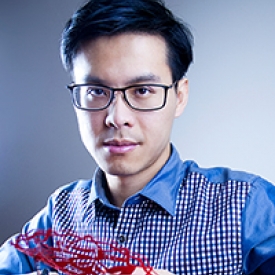
國立臺灣科技大學建築系副教授
Associate Professor, Department of architecture, National Taiwan University of Science and Technology
I am Chen,Yan-Ting, author of “Design Awards.” When people see a work was written by me, they can most often guess that the work is related to the international competition. Thanks to the programs of the Ministry of Education, which “encourage students to participate in the international competitions for art and design,” I was able to win more than 100 awards, including the D&AD in the UK, ADC in New York, TDC in Tokyo, iF and Red Dot in Germany, among others. Through the “MOE Scholarship Program for Overseas Study in Arts and Design” I was able to study for a master’s degree at the Pratt Institute in New York City. I have also received the first-place award of the Taiwan International Student Design Competition (TISDC) of the Ministry of Education. Having received so much support from the Ministry of Education, I am more than honored to share my experience and takeaways from participating in the international competition.
During my days in school, I won international competition prizes in the fields of 2D works, products, and animation. At that time, I also said that design is a way of thinking about solving problems. As long as you are capable of thinking with creativity and flexibility, and you work hard to improve your techniques, you can easily make your work applicable to many areas. In 2016, I went to teach at the Department of Architecture at the Taiwan University of Science and Technology. That’s when I began to challenge students to participate in competitions for architecture and interior design. After two years, we had won 251 international awards. Of course, I was very fortunate to have a group of very active and outstanding students. In the Yijing there is a line that says, “Heaven rewards hard work.” Han Yu also once said “Careers are endless. Only by taking one on is it possible to gain a glimpse of its edges.” Allow me to harp upon the significance of these truisms once more. Just as talent requires hard work, creativity requires skillful practice.
Competing for various international design awards requires some creative logic and competitive abilities too. When compared to visual communication or product design, architectural competitions—in addition to their larger physical solids and the physical analysis required—also highlight the relationship between people and self. A building doesn’t have one user and the constructed space does not only affect the user but also pedestrian flows, sunshine, energy, etc. The interaction between a piece of architecture and its surrounding environment is complex and closely woven. But you can’t overthink it. When participating in international competitions, one should never forget to “highlight the important points.” One’s presentation must be well-organized and clear. Each drawing must be aligned with the overarching theme in order to stand out from the rest.
In my experience of guiding students to participate in competitions, I have found that most students lack time management skills rather than creative talent. Every year there are students with decent pieces of work that are completed almost haphazardly. Some students even miss the submission deadline. No matter how good a piece of work is, if the execution is rushed or the work is submitted late their work could be all in vain. I suggest that students refer to the following methods to better grasp the steps of the creation process.
1. Continuously Create Set Portions of Work at Set Times
Just as people need to eat every day to survive, designers must continuously create. The portion size and time of each meal must be set and the same is true for creative work. If someone procrastinates until just before the deadline and then pulls an all-nighter to complete the project, it’s just as unhealthy as binge eating after fasting for a long period of time. Some students stay up late every night and feel as though they are working very hard. However, when they compile their work on graduation day, they discover all of their work is careless and their years of work are fruitless.
Everyone has their own design preferences, and it’s hard to insist on perfection for every job. However, I suggest that students make at least two pieces of quality work every semester. Creating in set portions at set times is the best way to create quality work and a practice that is essential to the creative professions. Creating two pieces each semester isn’t a lot, but by graduation, you will have 10 pieces of quality work that can be exhibited on their own. Whether you want to keep studying or find a job at home or abroad, you’ll have no problem.
2. Know the Schedule and Register for More Than One Competition
The Ministry of Education’s International Design Competition is a world-renowned international design competition for students. The competition challenges students to push themselves, expand their horizons and strengthen their abilities. At the beginning of each semester, I create a schedule for students that want to participate in the competition so as to help them schedule the completion of their creative work and to encourage them to submit their work to multiple competitions. For example, works submitted for the eVolo skyscraper award can also be submitted for the AMP building prize. Projects submitted for the Reddot Prize can also be submitted for the iF or IDEA prizes. It’s important to schedule one’s work schedules so as to ensure it receives the best exposure at competitions. However, it’s important to remember to never submit the same work to the same competition and it’s important to continuously create.
3. The Individual, the Group and Cross-border Competitions
If you have had some success in a familiar area, you might consider pushing yourself to compete in a competition in another area. Working in a new area is like returning to square one. Although it’s a challenging process, it can help designers to recover their original aspirations and evolve. I suggest making friends and forming teams with people from different areas of expertise. Teams like these can use wider sets of knowledge to consider problems from a more comprehensive perspective. These teams can also effectively distribute tasks more effectively. If you like to compete for international awards, then it is even more important to be active in more than just one area. Only in this way is it possible to maximize one’s strength and flexibility in those different areas and receive recognition for it.
4. Different Categories Multiple Techniques
There are also techniques that can be used to increase one’s chances of receiving international awards. However, the effectiveness of these techniques presupposes a solid understanding of the basics. Students should be familiar with the different ways that their work can be displayed, i.e. sketch, watercolor, paper cutout, model, photography, etc. Different methods of display will produce different styles and effects. Furthermore, works displayed using different methods can be submitted to different competitions. For example, when submitting 2D designs, don’t limit yourself to the medium of posters. You can also design books, app interfaces, activity identification, etc.
Theabove principles are simple and not difficult to implement. As long as studentscan overcome their laziness and persist, they will see results. There are onlyabout a dozen students in my research office. They have pretty normal lives andthey don’t procrastinate. This has allowed them to earn more than 200 awards inabout two years. Below you can find descriptions of their work, images of theirdisplays, and a few techniques for displaying one’s work.
I. Architectural Design
There are three types of architectural competitions. The first one limits the size of the structure’s base. The organizer provides maps, photos, cultural and historical materials, and even CAD files. This type of competition includes IFLA, OISTAT, IIDA, etc. For example, the 2019 IFLA competition selected a 6,000 m2 site in the Hovinbyen development zone in Oslo, Norway. The competitors were required to complete the project while considering the area, shape, and environment of the site. The second type of competition limits the form of the structure. This type of competition includes eVolo, CTBUH, etc. These two types of competitions only accept submissions for skyscrapers. The third type of competition is a free creation, which has no restrictions for the building site, the building form, etc. This is the category that most competitions fall under, including Archiprix, RIBA, Is Arch, AMP, etc.
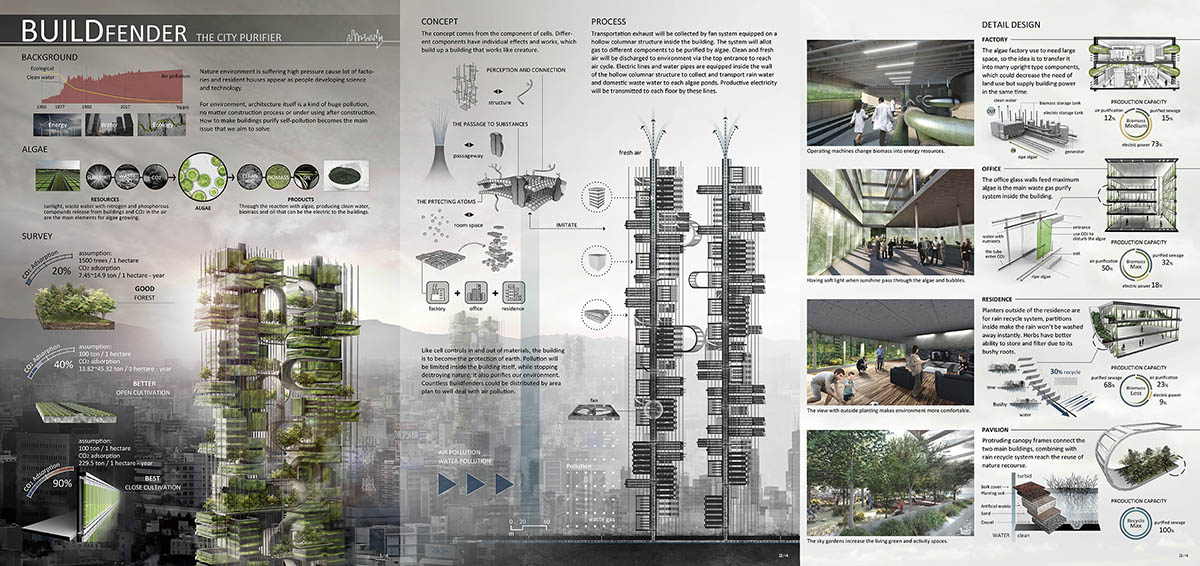
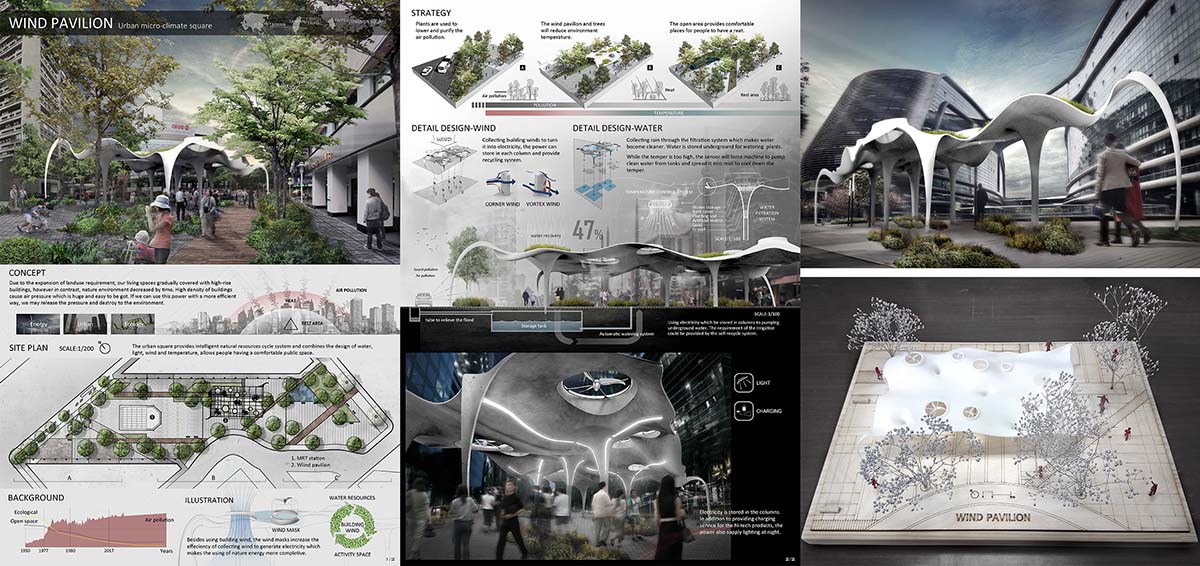
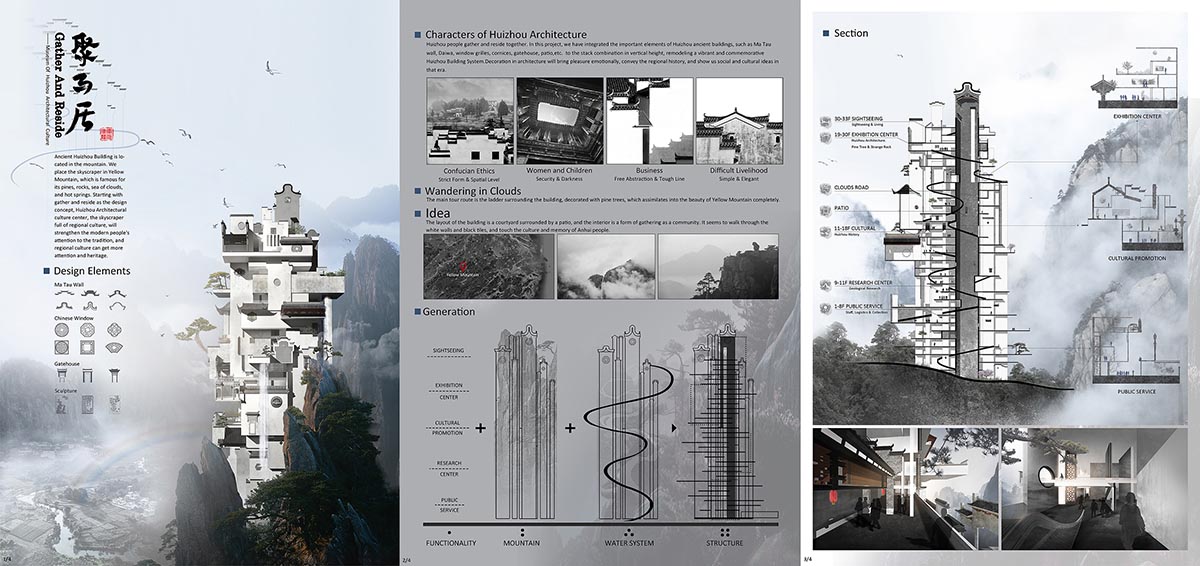
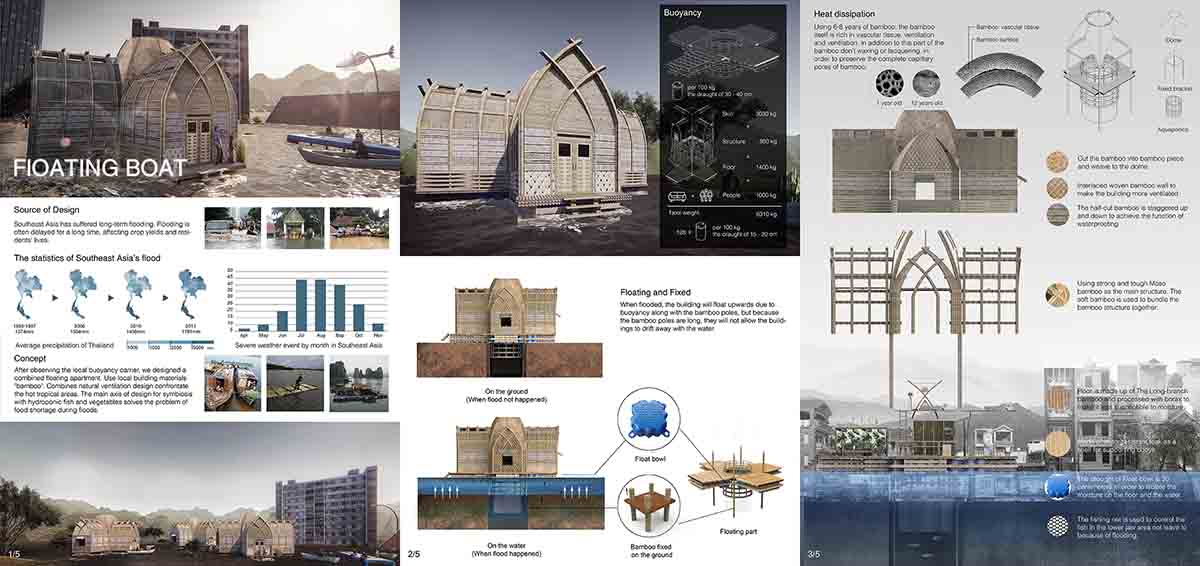
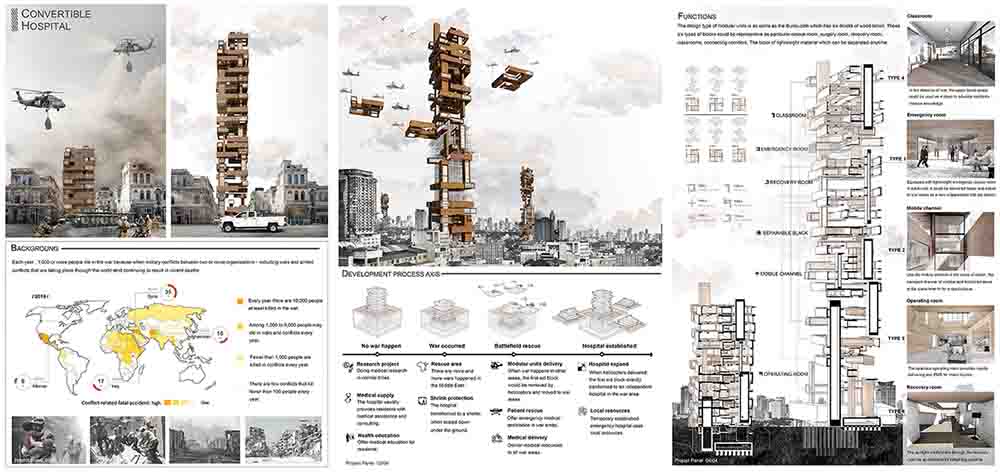
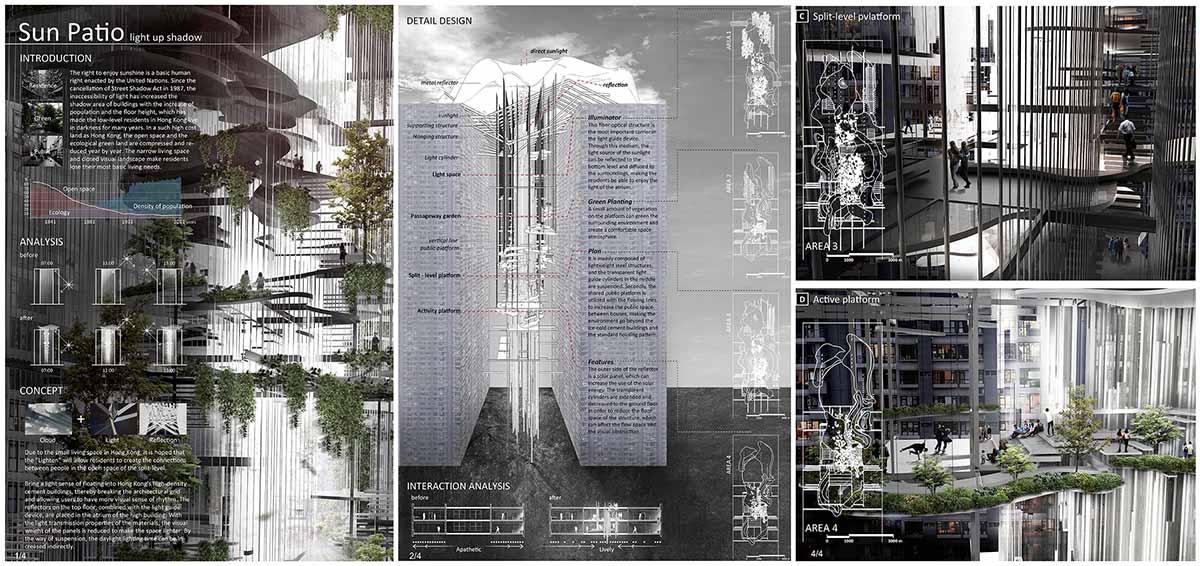
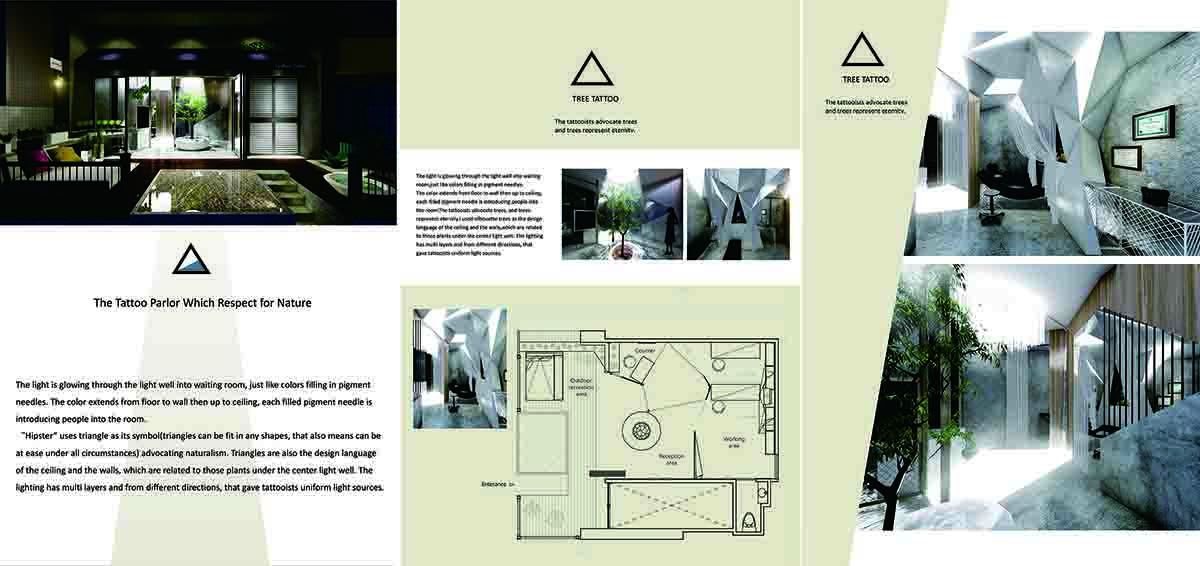

II. Product Design
Conceptual product competitions mostly use “problem to solution” as the main axis of thought. So how do you apply the design to solve the problem? There are several thinking methods that students can use.
1. Prioritizing Beauty: This means taking visual aesthetics and creativity as the core values. For example, the recently popular designer Nendo’s “Thin Black Line” furniture series. This series has no consideration for comfort, durability or strength but explores a new taste in furniture made purely of lines.
2. Bionic Technology: It’s never too late to learn from nature and observe nature while considering the use of new building materials. Bionic technologies can often provide great solutions. For example, the award-winning project below “Bioilluminant” uses microalgae to absorb carbon dioxide inside and outside the structure. “Breathing Barrier” incorporates moss, which can decompose CO2 and PM 2.5 and absorb sound waves, to reduce sound and air pollution levels on the highway.
Conceptual design gives students a lot of freedom and space to be creative. Commercial design, however, is different as it requires students to continue to “solve the problems encountered by users under existing conditions.” I opened a commercialization course at the Department of Architecture of the Taiwan University of Science and Technology. The 18 week-long course taught students to use creativity to yield ideas that could be executed and to truly understand production limits and market demand. Seven works from the class were mass-produced. Each year, through the Taiwan Science and Technology Transfer Center, the authorization and derivative benefits for these products are distributed to the students. What the students entering these competitions must understand is that although they can develop an infinite number of concepts, their opponents can too. Although there are various restrictions such as cost considerations and technical limitations during the commercialization, other products on the market also face the same restrictions. Competing in competitions and commercializing products are both challenging. Students shouldn’t be afraid to use an open mind to face new challenges.
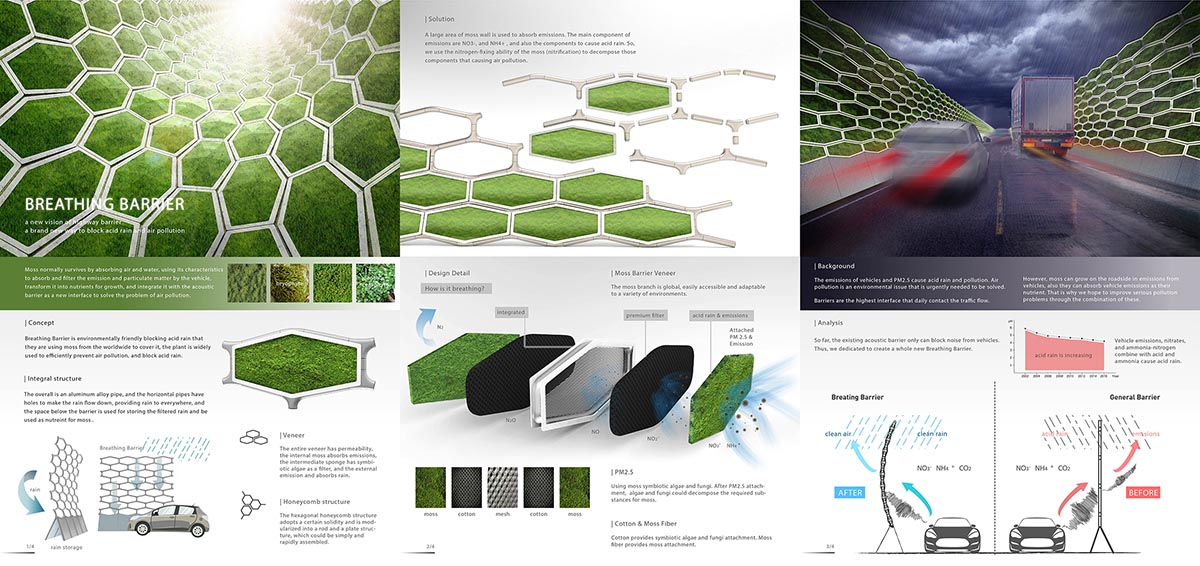
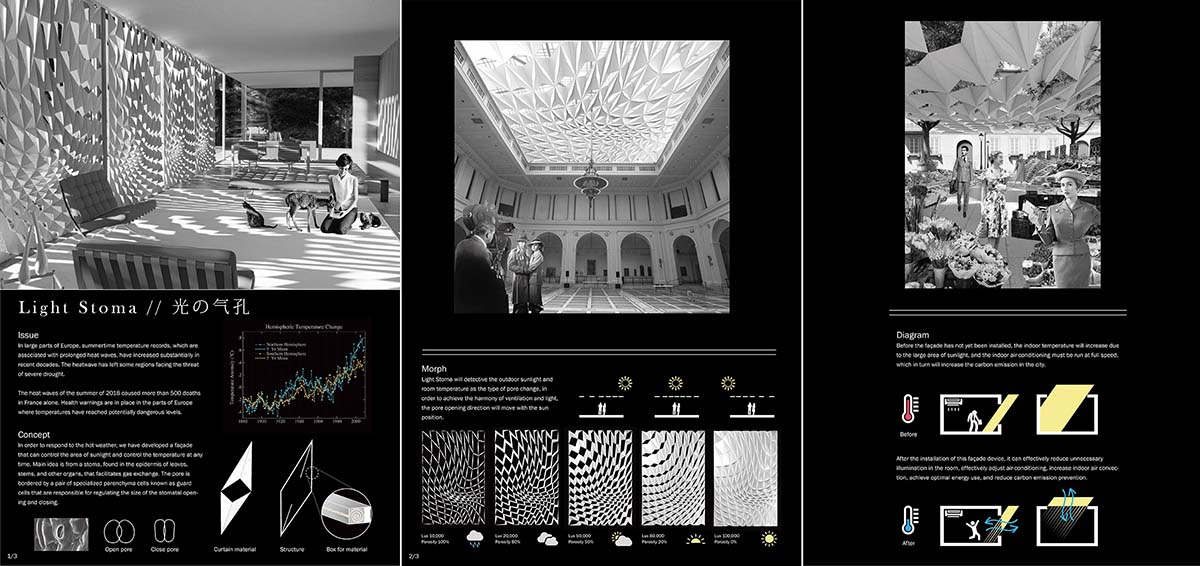
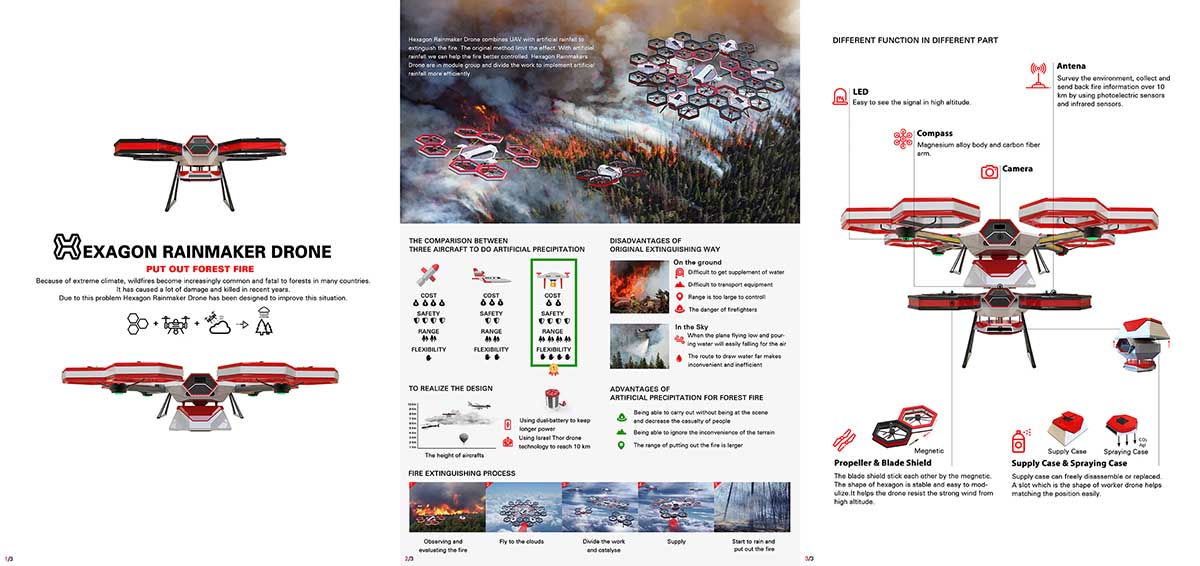
Photo 11, Hexagon Rainmaker Drone designed by Tang, Rui-Feng and Chen, Ting, won finalist of 2018 Industrial Design Excellence Award (IDEA), IDA for 4 awards.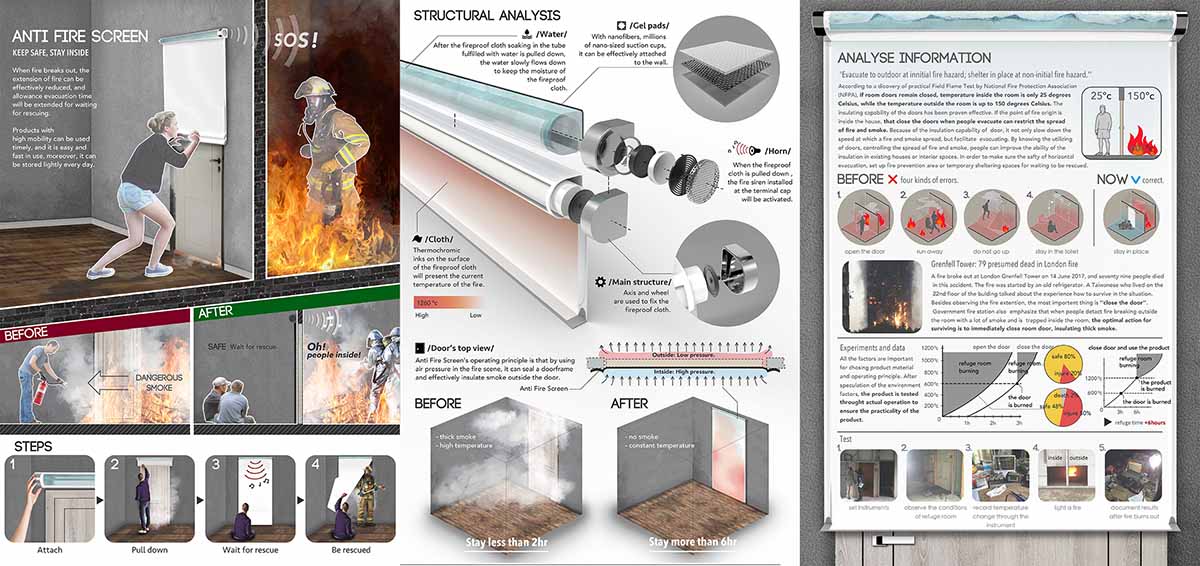
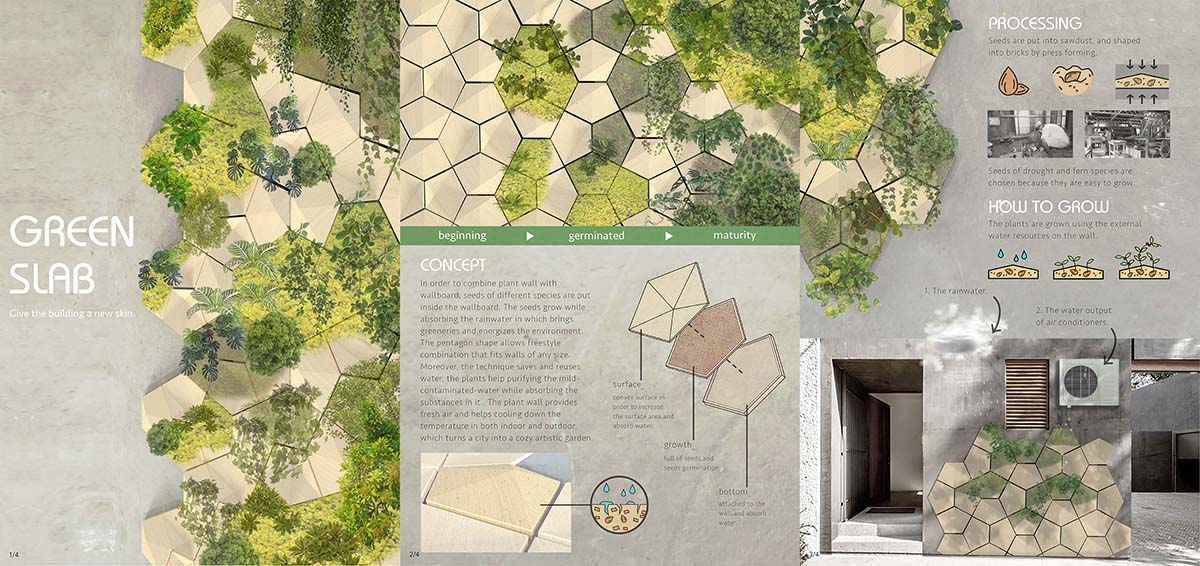
Photo 13, Green Slab designed by Tao, Chun-Jung, won 2018 Red Dot Award: Design Concept, Golden Pin Concept Design Award for 5 awards.
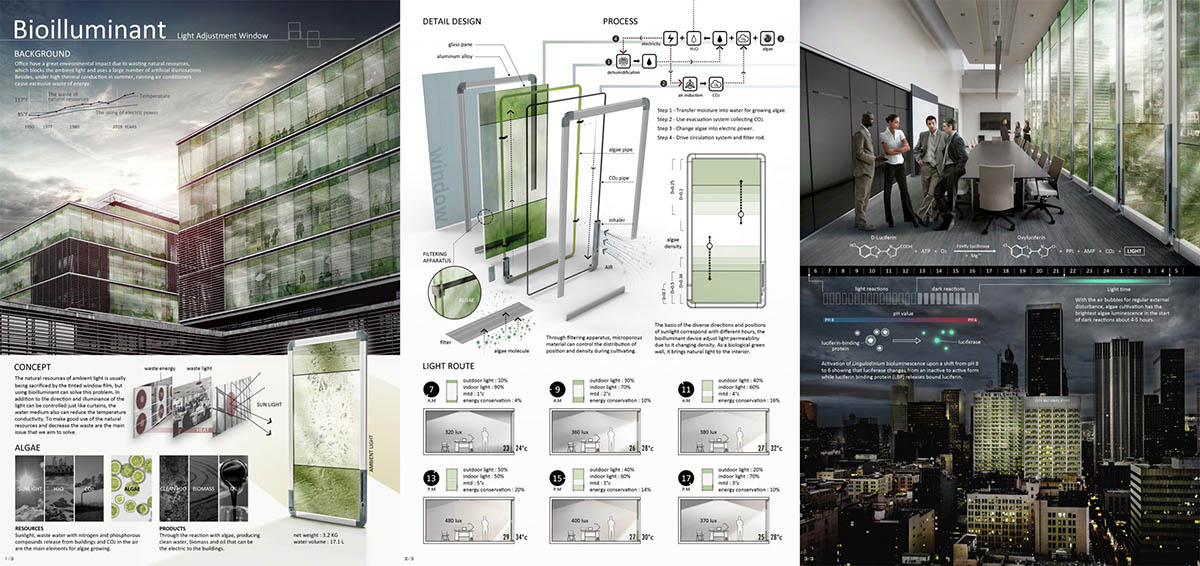
Photo 14, Bioilluminant designed by Chen, Chi-Shan, won Grand prize of 2018 Architecture MasterPrize, 2018 Red Dot Award: Design Concept for 7 awards.
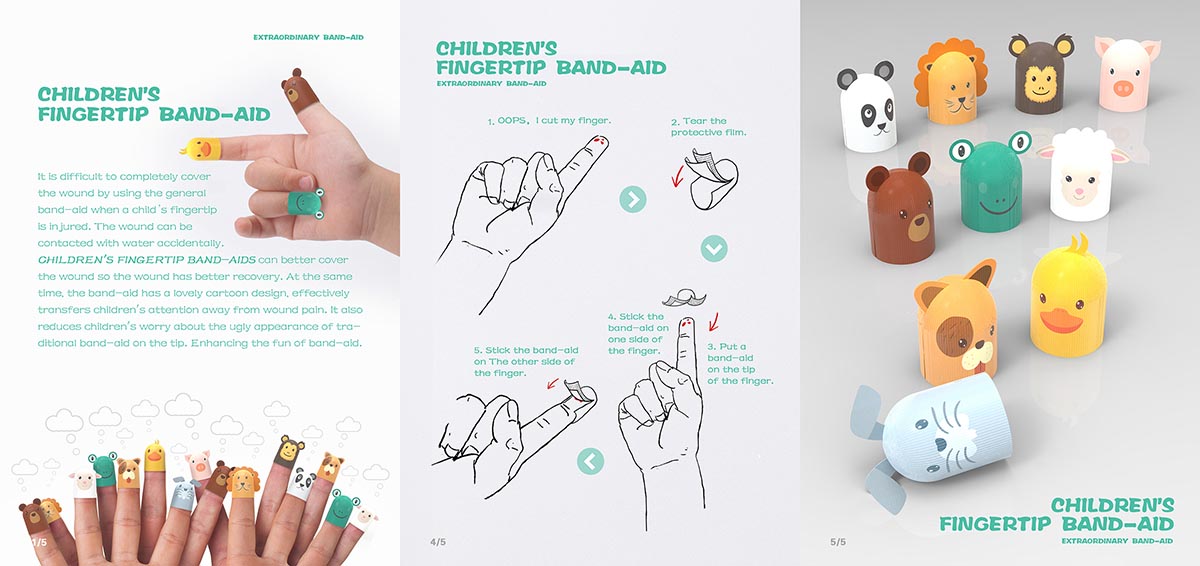
Photo15, Children’s Fingertip Band-aid designed by Yi, Jin-Huan, won Jury RecommendationAward of 2017 Taipei International Design Award, Bronze of IDA for 2awards.
III. Visual Communication Design
There are thousands of ways to express visual communication design, but I often tell my students that “simplification” is a very effective secret to winning. I encourage students to simplify visual codes and to use easily understood visuals to communicate complex imagery and meaning. This is especially true at international competitions where there exist cultural and language barriers.
The poster award is the main item of the visual communication category. Awards in different countries and with different historical backgrounds have different criterion for selection and awarding style. The award granting and award receiving style is different too. The award-winning works can be divided into two categories. One is a “communicative” poster, for example, posters for commercial advertising, drama propaganda, anti-war, global warming, and other humane efforts. Whether for the public or private uses, these posters all communicate messages. ADAA, Lathi, BICM, Warsaw, etc. all accept submissions for this category. The other type of posters is “expressive”. These posters are not focused on communication but on expressing new visual experiences. For example, Golden Bee, Chaumont, Tokyo TDC, Toyama, and other publications show a large number of such works, compiling sketches, collages and other works of multimedia, full of experimental spirit and aesthetics.

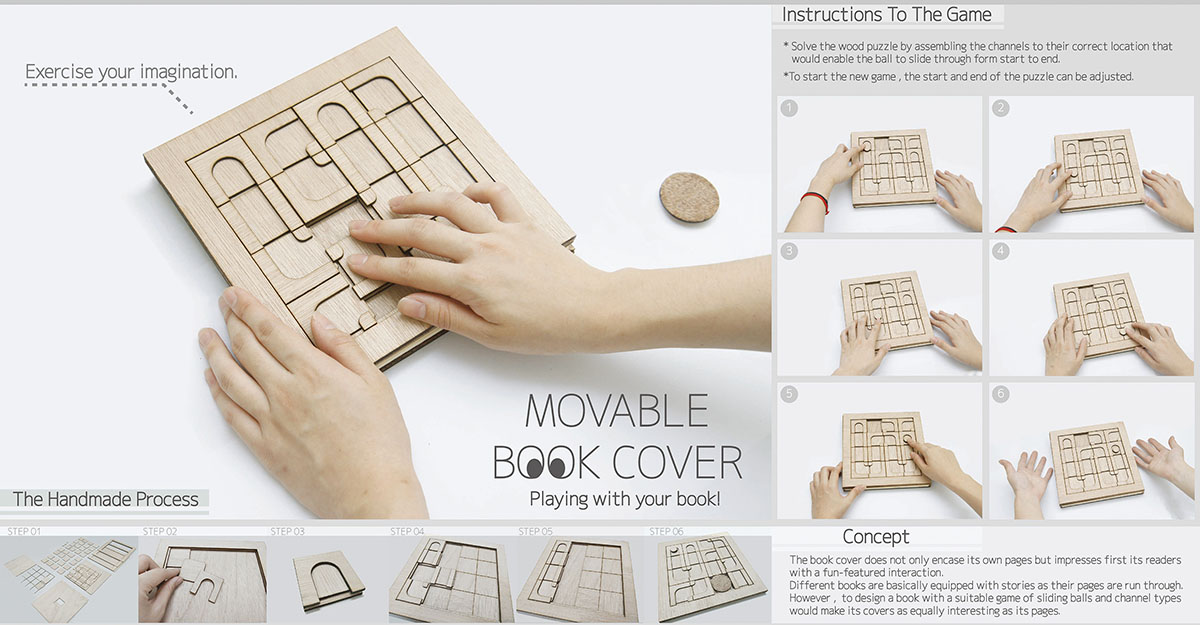
Finally, I recommend all students, in addition to participating in international competitions also accumulate diverse life experiences through reading and travel, set new learning goals every year, and learn new knowledge from new fields as much as possible, so as to maintain flexibility and enthusiasm for thinking. International competitions are not the endpoint for personal pursuits, but rather a starting point. Starting from here, you can make your professional career more exciting.